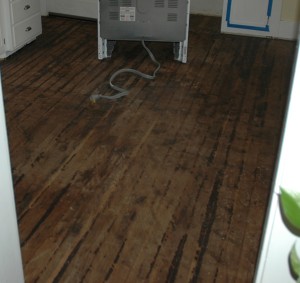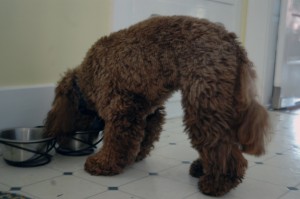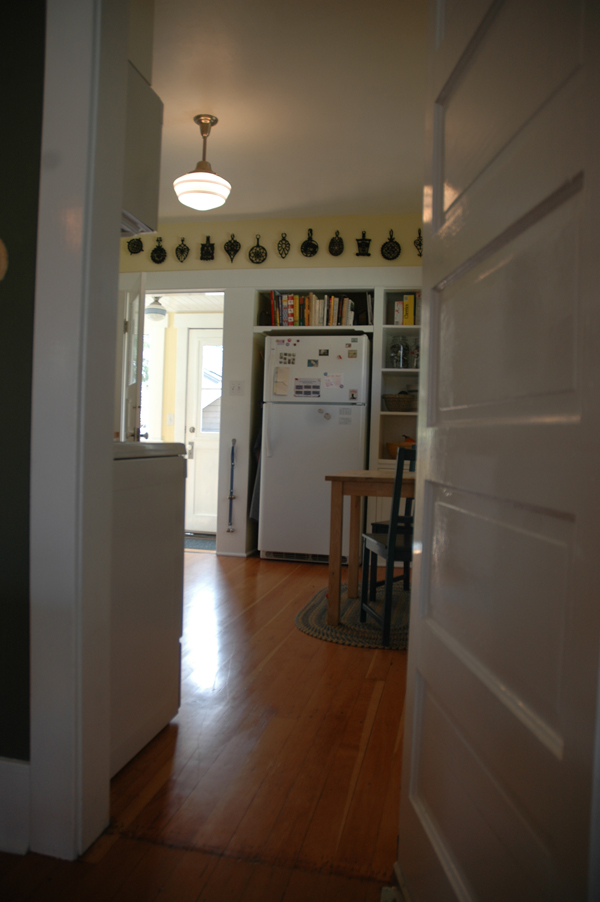We successfully ignored the vinyl floor in our kitchen for two years. It wasn’t offensive (although the white did tend to show dirt quickly). It even matched the tile backsplash. But floor in the living room appeared to run interrupted underneath the vinyl, suggesting the fir continued into the kitchen. While my wife was out of town for a week, I pried up the transition strips, slid a putty knife under the vinyl and tore up a strip while hoping the fir didn’t end butted up against a sheet of plywood or had rotted.

After tearing up two layers of flooring and scraping mastic, the fir appeared to be in decent shape.
I found neither rot nor plywood. The vinyl concealed a layer of linoleum in a leaf pattern similar to that used in the ground-floor bedrooms. Below the linoleum, I found the fir I’d expected. The linoleum actually came up relatively easily, but the mastic used to glue it down did not. It stank, especially when I applied a damp towel to soften it before scraping. The water softens the mastic and simplifies scraping, but no job requiring knee pads is pleasant work. I spent a couple of days on my hands and knees, my clothes blackened and smelling of 100-year-old mastic that has dried and been re-wetted.
I’ve installed vinyl, tile, and pre-finished wood floors, but I leave refinishing to the professionals. When I had the mastic up, I called our floor guy and let him sand, fill, and topcoat.


